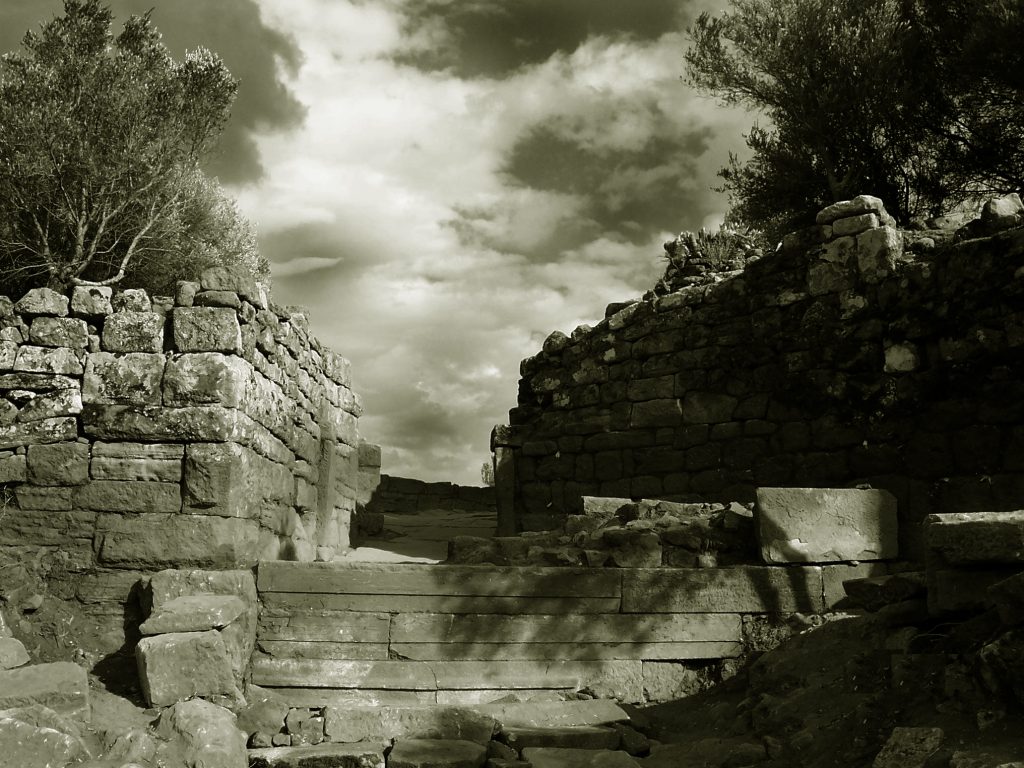
Gate of Demirkapı, which is also mentioned by its name in studies carried out by former researchers, was the only entry point to the upper city until 2004 when the excavation was started. Gate of Demirkapı, which has been serving since the Archaic Period, was probably blocked and canceled in the Roman Period. The cancelation of the gate with lintel and architrave blocks removed from various obsolete structures, must have been associated with construction of the North Bath, which is one of the city’s largest public baths located just north of Gate of Demirkapı, probably in the 2nd -3rd century CE. Although any trace of stone paved road leading to the door could not be detected during the research made outside the door, there is a road system paved with very large stone slabs that leads to the inner city from the entrance.
The stone paved road that should have been outside of the door must have been destroyed during the construction of the public bath. The road, ascending from the gate into the city, continues in two different directions. Under the paved road, a drainage system was carved into the bedrock that can reach depths equivalent to an average human height. The system lies under the road on the west-east axis for about 10 m then splits to two channels; one turns to the north and other to the east. The drainage system was built to direct the rainwater falling on the area outside of Gate of Demirkapı to the cistern and collection pool of the public bath located on a lower elevation than the gate. Jamb slabs on the left and right sides of the main entrance door at the entrance of Gate of Demirkapı attracts attention. After passing the jambs, on the left side (in the north direction), four rooms that are built adjacent to the city walls, opening into the gate with a door and also connected to each other by doors draw attention.
These spaces, which we think were used to control Gate of Demirkapı before it had been canceled, must have been added to the large space that was formed in the background in the Roman Period (2nd and 3rd centuries CE), after the cancellation of the door. The large area behind the door used while the door was still functioning, which its purpose was not yet understood, should have been opened to construction for a large building with a courtyard and a cistern, after Gate of Demirkapı was blocked. A floor consisting of lime-added compressed sand and pebble was found in the western half of a room (Room 1) that belongs to the same building complex. The floor is dated to 2nd and 3rd centuries CE with the help of the in-situ finds. Early observations on its general use suggest that the space may have been used as an andron. Presence of lime floor and walls decorated with colored stucco, a need for cleaning with water, data related to eating and drinking such as the animal bones recovered in the water canal and olive seeds support this assumption. However, it does not seem possible to reach clear results before the excavation of the other sites around it.
